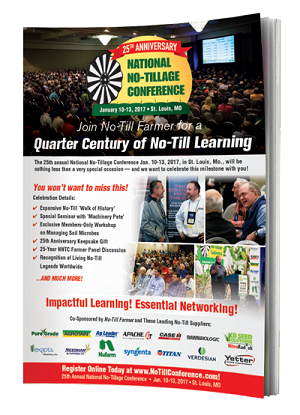Annual Ryegrass Dispatches with Fragipan Problems, They Say.
Midwest farmers who have been working with annual ryegrass for some years as a cover crop know that annual ryegrass busts up fragipan (and other soil compactions). They have probably seen for themselves how annual ryegrass as a cover crop then allows corn and soybeans roots to access deeper soil moisture and nutrients.That boosts production, as we’ve seen now for about 20 years.
Mike Plumer, a long-time pioneer in no-till ag and cover crop systems, discovered the deep rooting aspects of annual ryegrass back in the 1990s, when he was still working as an agronomist for the Univ. of Illinois Extension. He and his cooperating farmers also discovered that the roots grow right through compacted soils. In subsequent years, they noticed a yield increase in crops in those same fields.
In a recent article in No-Till Magazine, researchers at the University of Kentucky did both laboratory and field trials using annual ryegrass on soils with fragipan. Here are a number of paragraphs from that article.
Soil fragipans exist in 2.7 million acres in Kentucky and in 50 million acres in the U.S. In Kentucky, the average depth of the fragipan layer in the soil is about 20-24 inches. This results in a shallow soil that limits crops’ yield potential due to low water-holding capacity. This is especially true during dry growing seasons or droughts. These same soils are easily saturated with water in the winter, which limits yields on cool-season crops such as wheat.
Breaking down the fragipan would increase the soil depth and should significantly boost grain yields in the state, similar to the boost farmers received from implementing no-till production.
Four years into the research project, Grove and fellow UK soil scientists Lloyd Murdock, Tasios Karathanasis and Chris Matocha have found that annual ryegrass and some chemical combinations appear to break down the fragipan.
In the lab, Karathanasis submersed chunks of fragipan in several different solutions, one of which was a ryegrass extract.
“Within 2-4 weeks we began to see the ryegrass extract break down the fragipan,” he said. “Not only does ryegrass have a deep root system that can penetrate the pan, but it also releases a chemical or chemicals that can help break it.”
UK soil scientists have planted annual ryegrass as a cover crop in grain fields followed by either corn or soybeans for the past three growing seasons with the fourth round now in the ground. The first year when annual ryegrass was followed by corn, there was no yield difference. The second year when it was followed by soybeans, there was a 25% yield increase in the soybeans. The third year, the researchers followed the ryegrass with soybeans again and there was a slight, but not significant, yield increase.
UK researchers traveled to Hamilton County, Illinois, to take soil samples from a field that had been planted in a ryegrass cover crop since 2000 and followed every year with no-till corn. Mike  Plumer had used a part of this field in some of his earlier cover crop studies.
Plumer had used a part of this field in some of his earlier cover crop studies.
They found the fragipan layer to be much deeper in the soil profile in the fields with ryegrass. More encouraging news came when the farmer told them about his yields.
“When the study started in 2000, the farmer’s yields were 15 bushels an acre below the county average. His fields are now averaging 30 bushels more per acre than the county average,” Murdock said. “We really do not know how well this field represents our situation in Kentucky, but this gives us significant encouragement that we are beginning to prove that annual ryegrass is effective and will give significant results with accumulative years of a ryegrass cover crop.”







 If you want to build soil without investing much in a cover crop, consider annual ryegrass. A quick-growing, non-spreading bunch grass, annual ryegrass is a reliable, versatile performer almost anywhere, assuming adequate moisture and fertility. It does a fine job of holding soil, taking up excess N and outcompeting weeds.
If you want to build soil without investing much in a cover crop, consider annual ryegrass. A quick-growing, non-spreading bunch grass, annual ryegrass is a reliable, versatile performer almost anywhere, assuming adequate moisture and fertility. It does a fine job of holding soil, taking up excess N and outcompeting weeds.